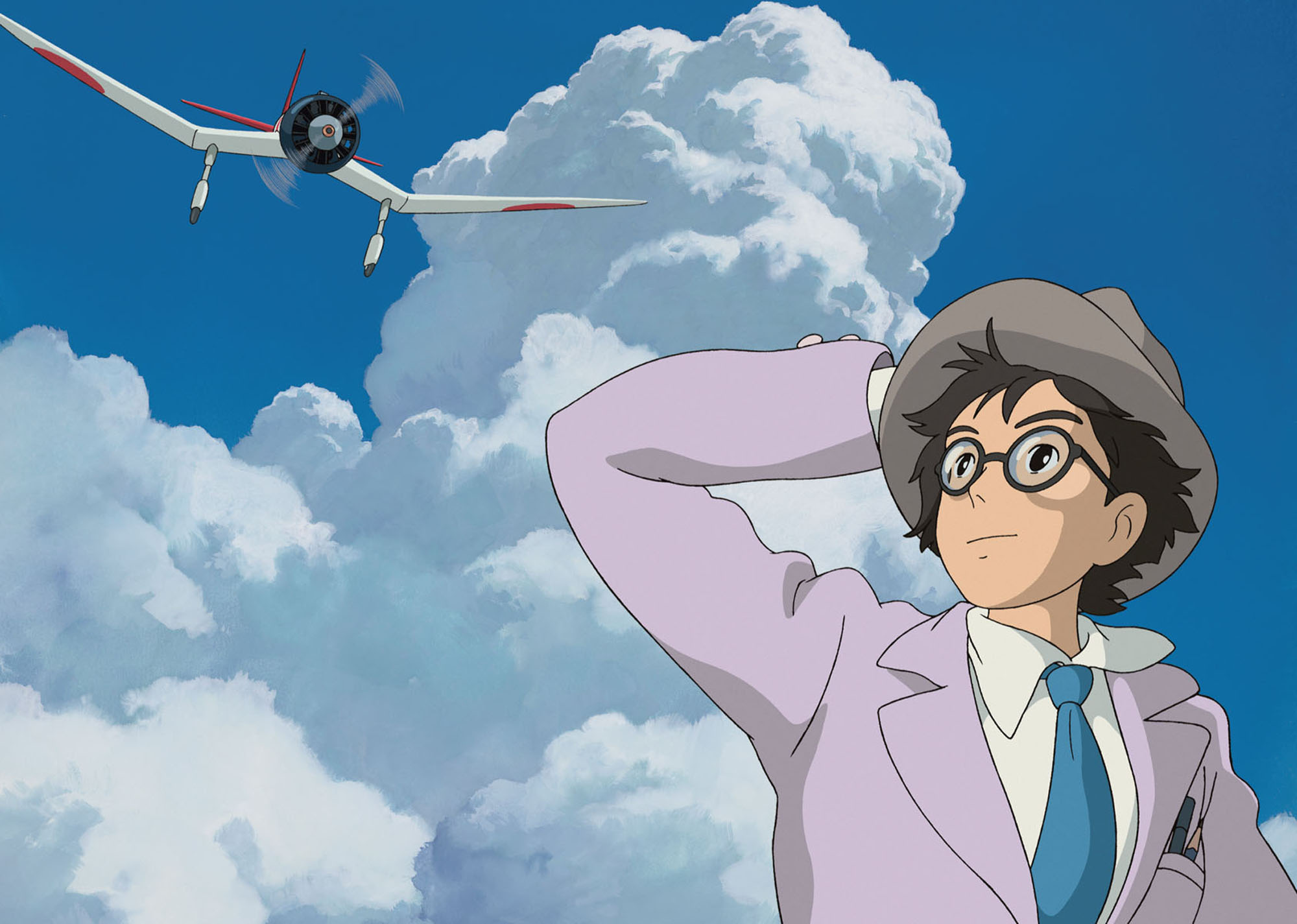Author’s note: This review of The Wind Rises is based on a subtitled version of the film for awards-season consideration, and not the dubbed version being released in U.S. theaters by Touchstone Pictures.
The news that The Wind Rises would be the final animated feature from beloved writer/director Hayao Miyazaki was met with both sadness and horror.
That wasn’t just because it meant an end to the career of the maker of such non-classic favorites as My Neighbor Totoro (1988), Princess Mononoke (1997) and Spirited Away (2001), it was also a reminder of other veteran filmmakers who have gone out on a sour note. (Charlie Chaplin and his 1967 fiasco The Countess from Hong Kong comes to mind, as do John Ford’s 1966 swansong 7 Women and Stanley Kubrick’s 1999 dud Eyes Wide Shut.)
While the Oscar-nominated Wind Rises might not be his career masterpiece, it’s still up to Miyazaki’s high standards. It seems that if he really is retiring – recent statements suggest he may be reconsidering that decision – at least he’s gone out in the fashion of another Japanese filmmaker, Akira Kurosawa, who bowed out with the intensely personal 1993 drama Madadayo.
And make no mistake, this is a different beast than Miyazaki’s later, family friendly hits. It’s a bit on the slow side, it’s a bit too serious for its own good, and it concentrates on characters as much as it does the visuals. However, the good news is that the film is a flawed but still very enjoyable flight of fancy.
An animated historical/biographical drama with fantasy elements, The Wind Rises is (very) loosely based on the real-life experiences of Jiro Horikoshi, an aeronautical engineer who worked for Japan’s Mitsubishi Corp. before and after World War II.
In this version of events, which were also told in Miyazaki’s early manga version, Jiro fell in love with airplanes and flying at any early age, but poor eyesight kept him from pursuing a career as a pilot. So, inspired by the efforts of an Italian engineer, Giovanni Battista Caproni, he concentrates on airplane design, using such “organic” elements as fish bones as their basis.
Together, with a childhood friend, Honjo, Jiro hopes to make his country’s aeronautical industry a rival – or even better – to those of other countries, including the supposed industry titan, Germany.
The film also looks at Hirokoshi’s personal life and other defining experiences. Having survived the disastrous Great Banto Earthquake of 1923, which decimated Japan’s Nihonbashi district, he made the acquaintance of the two Sakomi sisters, who would play an important role in his life. Years later, he falls for a now-grown Nahoko, and marries her, in spite of her debilitating case of tuberculosis.
As always, Miyazaki uses as much cel animation (the traditional, 2D painted format of cartooning) as humanly possible here. As a result, this film looks every bit as good as any of the other Miyazaki classics. He’s even found a way to improve on the breathtaking flying sequences of his underrated 1992 hit, Porco Rosso. It’s at these times that the film really takes off and soars.
(Among the best parts are the encounters between Horikoshi and Caproni. Though in real life they never met, The Wind Rises supposes that they met on a fantasy “plain,” where the two men could share their visions of what planes should look like and being used for, and where they could show off their designs to each other.)
And again, while the tone of this piece varies — at times it’s wide-eyed fantasy, and at others it turns tragic and sad – everything is done with a surprising gentleness, tenderness and affection. Outside of the better Pixar efforts and the recent LEGO Movie, it’s the best testament to the strengths and powers of animated filmmaking and storytelling.
Jeff Michael Vice can also be heard reviewing films, television programs, comics, books, music and other things as part of The Geek Show Podcast (www.thegeekshowpodcast.com), and can be seen reviewing films as part of Xfinity’s Big Movie Mouth-Off (www.facebook.com/BigMovieMouthOff).

